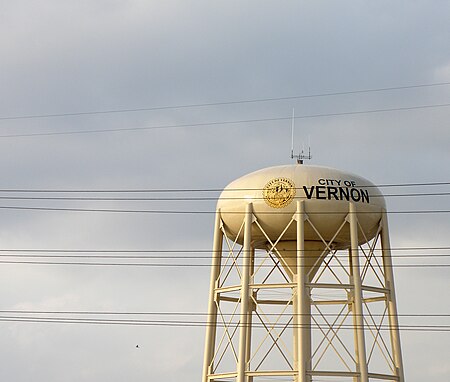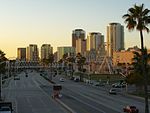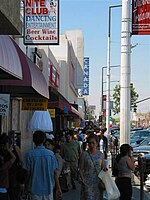Vernon, California
1905 establishments in CaliforniaCities in Los Angeles County, CaliforniaGateway CitiesIncorporated cities and towns in CaliforniaPopulated places established in 1905 ... and 2 more
Use mdy dates from April 2018Vernon, California

Vernon is a city five miles (8.0 km) south of downtown Los Angeles, California, the nearest separate city to downtown Los Angeles. The population was 112 at the 2010 United States Census, the least of any incorporated city in the state. Its population nearly doubled to 222 by the 2020 census, making it the second least populous city in the state after Amador City, whose population grew only slightly—from 185 in the 2010 census, to 200 in the 2020 census.The city is primarily composed of industrial areas and touts itself as "exclusively industrial". Meatpacking plants and warehouses are common. As of 2006, there were no parks in the city.
Excerpt from the Wikipedia article Vernon, California (License: CC BY-SA 3.0, Authors, Images).Vernon, California
Leonis Boulevard,
Geographical coordinates (GPS) Address Nearby Places Show on map
Geographical coordinates (GPS)
| Latitude | Longitude |
|---|---|
| N 34.001111111111 ° | E -118.21111111111 ° |
Address
Leonis Boulevard 3189
90058
California, United States
Open on Google Maps








